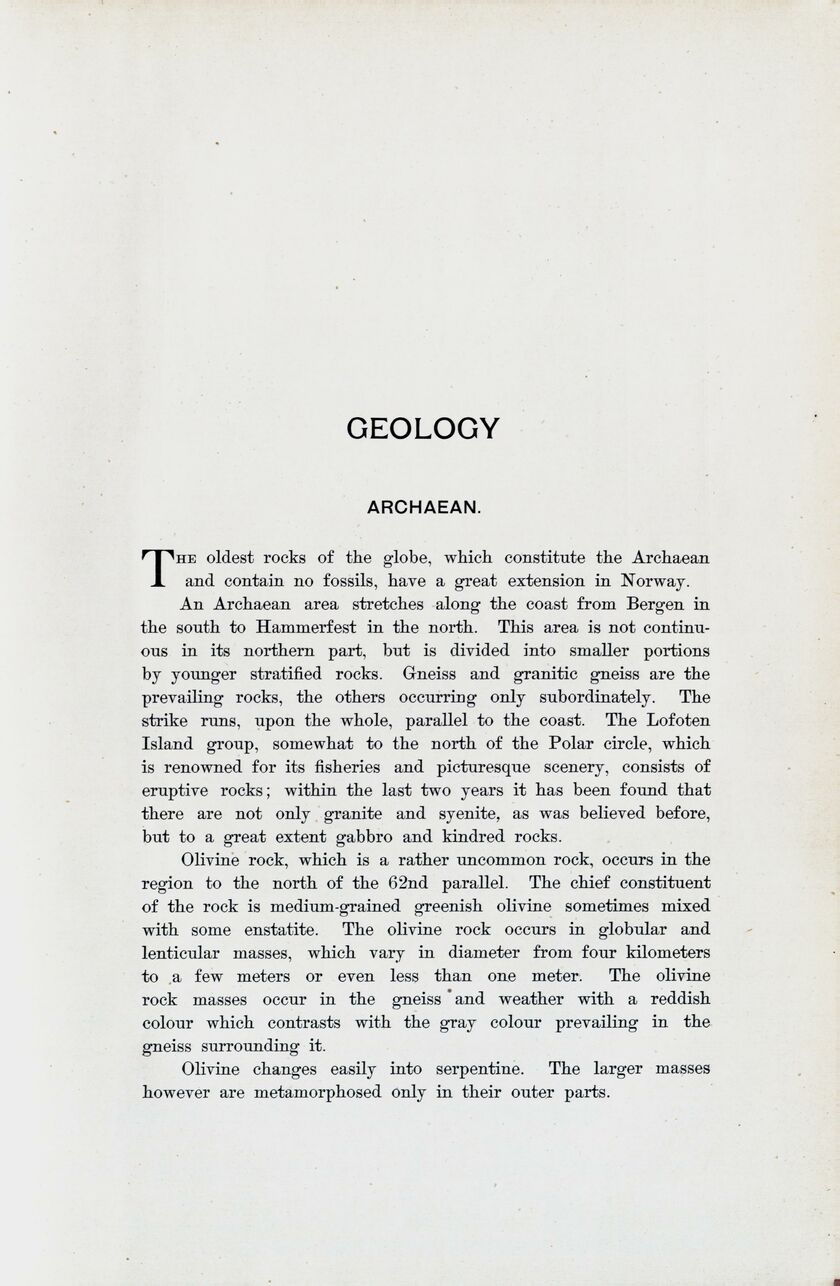
Full resolution (JPEG)
- On this page / på denna sida
- Geology, by H. H. Reusch

<< prev. page << föreg. sida << >> nästa sida >> next page >>
Below is the raw OCR text
from the above scanned image.
Do you see an error? Proofread the page now!
Här nedan syns maskintolkade texten från faksimilbilden ovan.
Ser du något fel? Korrekturläs sidan nu!
This page has been proofread at least once.
(diff)
(history)
Denna sida har korrekturlästs minst en gång.
(skillnad)
(historik)
GEOLOGY
ARCHAEAN.
The oldest rocks of the globe, which constitute the Archaean
and contain no fossils, have a great extension in Norway.
An Archaean area stretches along the coast from Bergen in
the south to Hammerfest in the north. This area is not
continuous in its northern part, but is divided into smaller portions
by younger stratified rocks. Gneiss and granitic gneiss are the
prevailing rocks, the others occurring only subordinately. The
strike runs, upon the whole, parallel to the coast. The Lofoten
Island group, somewhat to the north of the Polar circle, which
is renowned for its fisheries and picturesque scenery, consists of
eruptive rocks; within the last two years it has been found that
there are not only granite and syenite, as was believed before,
but to a great extent gabbro and kindred rocks.
Olivine rock, which is a rather uncommon rock, occurs in the
region to the north of the 62nd parallel. The chief constituent
of the rock is medium-grained greenish olivine sometimes mixed
with some enstatite. The olivine rock occurs in globular and
lenticular masses, which vary in diameter from four kilometers
to a few meters or even less than one meter. The olivine
rock masses occur in the gneiss and weather with a reddish
colour which contrasts with the gray colour prevailing in the
gneiss surrounding it.
Olivine changes easily into serpentine. The larger masses
however are metamorphosed only in their outer parts.
<< prev. page << föreg. sida << >> nästa sida >> next page >>
Project Runeberg, Tue Mar 11 10:44:48 2025
(aronsson)
(diff)
(history)
(download)
<< Previous
Next >>
https://runeberg.org/norparis/0047.html



